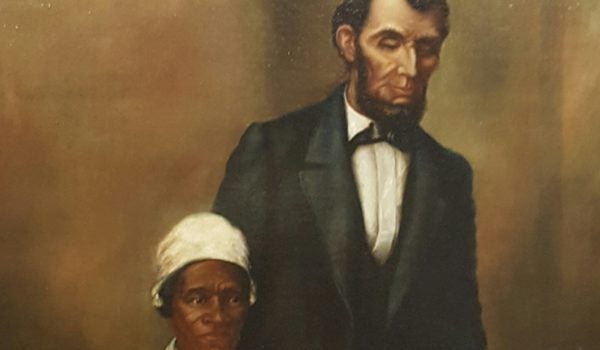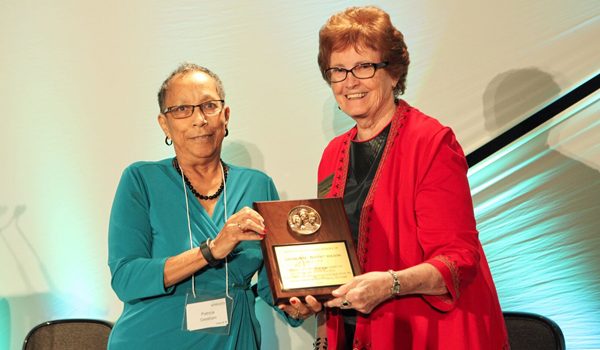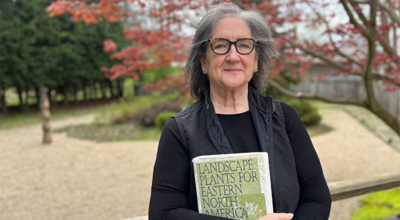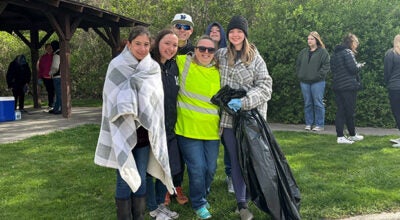THROWBACK THURSDAY: African American history
Published 10:22 am Thursday, February 15, 2018
NILES — In February we reflect on African American history. We celebrate national heroes — Martin Luther King Jr., Harriet Tubman, and Ida B. Wells. While we remember these figures, we should also recognize the local heroes who accomplished major professional strides, fought for social justice and paved the way for a better future. One such individual was Niles artist and activist Lottie Wilson, who had a trailblazing career on the national stage.
In 1854 Lottie Wilson was born in Niles to Calvin and Henrietta (Hill) Wilson. She developed her talents at the School of the Art Institute of Chicago, where she was the first African American to attend. Primarily a portrait and landscape painter, she also dabbled in the painting of fine china, needlework and sculpting. She created busts of important historical figures, including Frederick Douglas and Phillis Wheatley. A member of the National Association of Colored Women Clubs, Wilson organized art exhibits for their national conventions. Throughout her career, Wilson taught classes in oil painting, pastels, ceramics, drawing and painting conservation.
Wilson’s best known work is “President Lincoln with a Former Slave,” a painting depicting the historic 1864 meeting between President Abraham Lincoln and past slave turned activist, Sojourner Truth.
Wilson was invited to present this piece to President Theodore Roosevelt at the White House on May 8, 1902. According to newspaper reports, Roosevelt “gracefully accepted the gift, paying a high compliment to the subject who inspired it and the skill of the artist in so faithfully portraying the incident.” The painting then hung in the White House for a time, making her one of the first black artists to have work displayed in the prestigious building.
Aside from her professional career, Lottie Wilson actively campaigned for women’s rights, holding talks at churches and art studios. Wilson placed a strong emphasis on the rights of African American women. In 1896 she spoke at the first annual convention of the League of Colored Women in Washington D.C. She served as a delegate to the 1899 National American Women’s Suffrage Association Convention. Here she proposed an amendment protesting the policy of separate railroad coaches for African American women in the South.
After a lively discussion, the amendment was ultimately tabled on the grounds that it did not directly relate to women’s suffrage!
Although Wilson’s work led her to other cities across the country and abroad, including Bay City, Indianapolis and Washington D.C., she returned to Niles often. In 1906, she married Daniel Moss and moved back permanently to her hometown. She continued to exhibit her work and host classes at her family home on the corner of Fifth and Ferry streets until her death on Jan. 16, 1914. A year later, Wilson’s work was included in an exhibition titled “Fiftieth Anniversary of the Emancipation of the Negro” during the Lincoln Jubilee in Chicago.
As a well-respected artist of her time, Wilson’s voice was extremely important for other African American women, who were not well represented in the women’s progressive movement. Yet her story and her most famous painting remained largely unknown until recently. I
n the 1980s, a conservator in Washington D.C. stumbled upon Wilson’s painting and reached out to the Niles community. Thanks to the research of Alice Findley Brown, a Niles relative of Wilson’s, the story resurfaced. Lottie Wilson holds her rightful place as a hometown hero for her courage, tenacity and success. The Niles District Library purchased “President Lincoln with a Former Slave,” in 1982. The painting is currently on display at the Fort St. Joseph Museum, along with more information on Wilson’s amazing life story.
Mollie Watson is the assistant director of the Niles History Center, 508 E. Main St., Niles. She can be reached by phone at (269) 845-4054, or by email at mwatson@nilesmi.org








